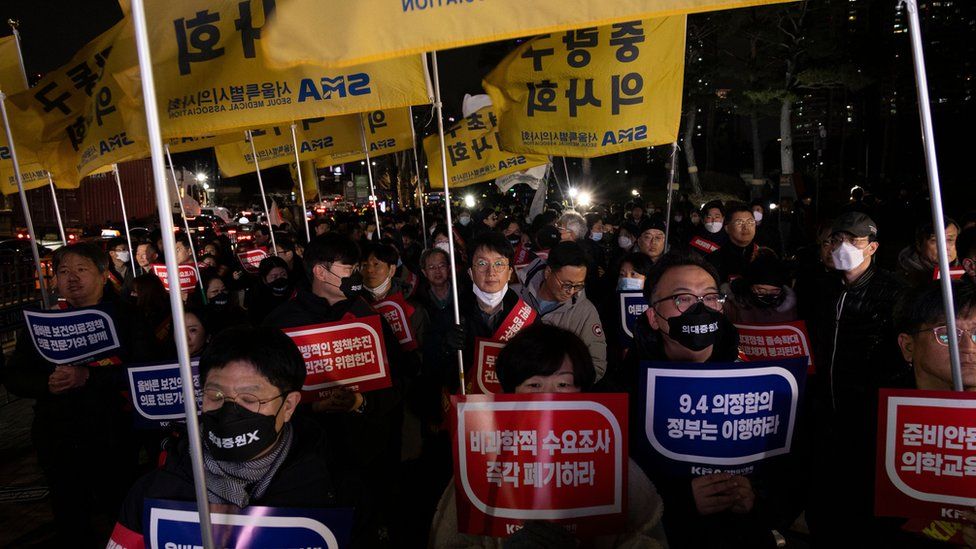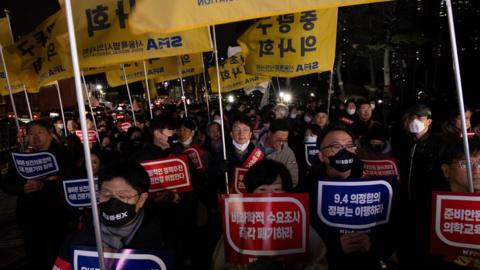
South Korea’s government has ordered more than 1,000 junior doctors to return to work after many staged walk-outs in protest of plans to increase the number of doctors in the system.
More than 6,000 interns and residents had resigned on Monday, said officials.
South Korea has one of the lowest doctor-per-patient ratios among OECD countries so the government wants to add more medical school placements.
But doctors oppose what they fear will be greater competition, observers say.
South Korea has a highly privatised healthcare system where most procedures are tied to insurance payments, and more than 90% of hospitals are private.
“More doctors mean more competition and reduced income for them… that is why they are against the proposal to increase physician supply,” said Prof Soonman Kwon, a public health expert at Seoul National University.
He said junior doctors were opposed to the policy because they were most likely to be affected at the start of their careers.
The South Korean Health Ministry on Monday said 1,630 doctors had not shown up to work on Tuesday. Organisers had pledged to strike from Tuesday.
The action has prompted significant concern about the country’s healthcare system this week. Several hospitals have moved onto emergency plans.
The walkout was planned by 2,700 junior doctors, who account for over a third of doctors on active duty at the country’s top five hospitals – and who form a core of emergency ward staffing, Yonhap News reported.
There are also fears it could trigger a wider strike among the industry – the protest actions have been endorsed by leading representatives group the Korean Medical Residents Association (Daejeon Association) as well as the Korean Intern Resident Association.
Doctors in South Korea are already among the most well-paid in the world, with 2022 OECD data showing the average specialist at a public hospital is paid nearly $200,000 (£159,000) a year.

